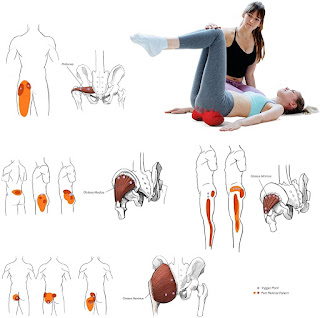Online & Studio Yoga Classes, PLUS Trigger Point Myofascial Release™ with Yin Yoga, in White Rock, BC
Monday:
Thursday:
09:15 Yin Yoga (no class Nov 2nd)
19:00 Yin Yoga
Friday:
November Special Lab 🤩
- Find an appropriate edge: Move slowly and gently into the pose, and look for an appropriate amount of intensity, never stretch so far as to cause pain.
- Stillness: consciously try to release into the pose, and to remain still, without shifting position.
- Hold the position: begin by holding for 1-3 minutes gradually progressing to 5 minutes or more.
- Come out of the pose gently and slowly
Kundalini yoga is an ancient art and science where the kundalini lies dormant in the human body. Applying breath work and the will to still help create a neutral state where meditation becomes accessible.
Kundalini yoga is a form of yoga that involves chanting, singing, breathing exercises, and repetitive poses. Its purpose is to activate your Kundalini energy or shakti. This is a spiritual energy that's said to be located at the base of your spine. ... Sometimes, the practice is also called “yoga of awareness.”
Bring your water bottle and...
Take three deep breaths at the door
and
Smile:)
When working with my own trigger points using my hands or props, it's when the TrPs lets go of unnecessary tension that the pain stops.
Myofascial release is a type of physical therapy often used to treat myofascial pain syndrome. Myofascial pain syndrome is a chronic pain disorder caused by sensitivity and tightness in your myofascial tissues. The pain usually originates from specific points within your myofascial tissues called “trigger points.”
Myofascial release focuses on reducing pain by easing the tension and tightness in the trigger points. It’s not always easy to understand what trigger point is responsible for the pain. Localizing pain to a specific trigger point is very difficult. For that reason, myofascial release is often used over a broad area of muscle and tissue rather than at single points.
With most postures, there's a yang component as well, which means that there is a muscle action that needs to stabilize and maintain the shape.
This awareness needs to be just as great in the TrP Myofascial Release class. The ultimate goal is to hold this new ideal length of the targeted tissue without it returning to its shortened state.
Doing a 3-minute gentle stretch means bringing the specific stretch to a mild intensity. On a scale of 1 to 10, with 10 being the maximum stretch with no pain, it is proven that anything over a level of 5 can harm the body. This once again is about going slow to not activate a stretch reflex, which is a muscle contraction in response to stretching.
In a nutshell, take your time exploring your body for trigger points with the joy of massaging out your tissues. The best part is that glow after the yoga is done… loving the body and how it feels when it is time to go home.
Every day is different, so become more accepting of where your mind takes you and stay as still as you can let the muscles relax. The breath connection can help with this, and it will quieten the mind as a result, and perhaps help to feel the sensations you are experiencing.
Note that yoga should never cause sharp pain. It is simply going to the edge of tension, and all this means is to find discomfort in the posture. Remember, if you cannot feel sensation there is nothing happening. (Unless you have congenital insensitivity to pain, CIP, also known as congenital analgesia.) Sometimes losing conscious awareness of your breath can disconnect you from the pose, but not always. Most likely the depth you're after is the connection to body-mind.
Trigger points can hurt when releasing them, however, the goal actually is to go to a blissful sensation that feels similar to pain. As you develop more self-awareness with the tremendous results through self-massage, life may become easy to manage, and even EMPOWERING.










Comments